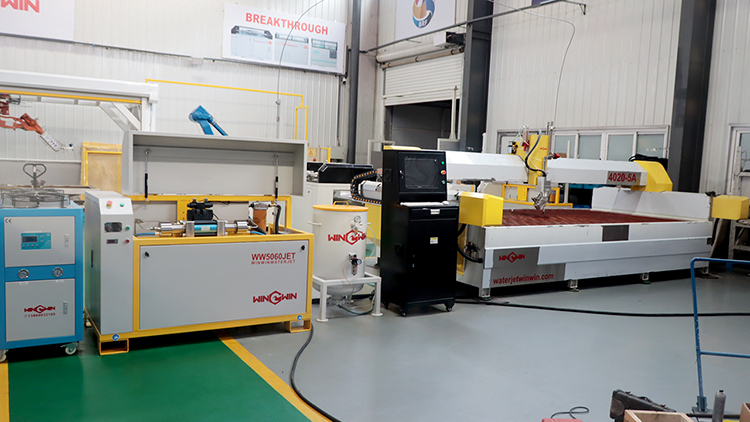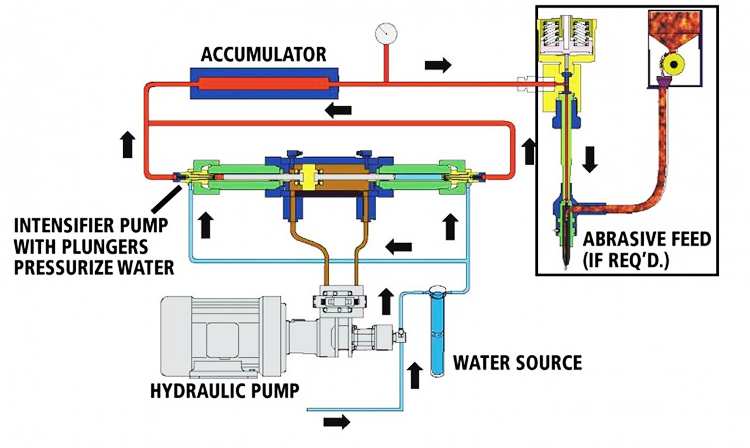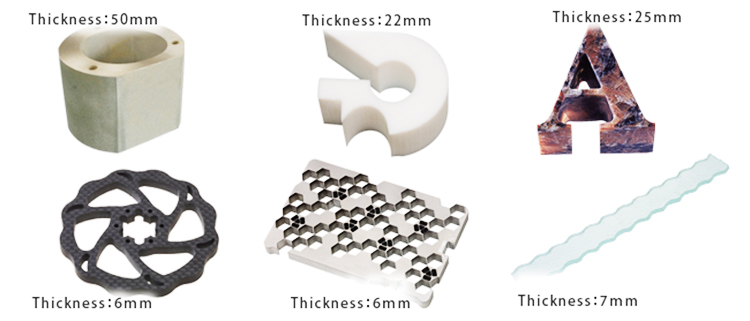
An Engineer's Guide to Waterjet Cutting
Waterjet cutting is a versatile and precise method of cutting a variety of materials using a high-pressure water jet mixed with an abrasive substance. This cutting technology is widely used in various industries due to its ability to cut materials with high precision and minimal heat affected zone. In this article, we’ll provide an overview of how waterjets work, what they can cut, and the advantages waterjet cutting brings to engineers and manufacturers.
How water jets work?

Waterjet cutting technology works by forcing large amounts of water through small holes at high pressure, typically 30,000 to 90,000 pounds per square inch (psi). As the pressurized water leaves the nozzle, it creates a supersonic stream of water capable of cutting a variety of materials.
There are two main methods of water jet cutting: pure water jet cutting and abrasive water jet cutting. Pure waterjet cutting is used to cut softer materials such as rubber, foam, and certain types of plastics. Abrasive waterjet cutting, on the other hand, involves adding abrasives, such as garnet, to the water stream to enhance cutting capabilities in harder materials such as steel, glass, and ceramics.
Specific applications of waterjet cutting technology can be further enhanced through the incorporation of robotics, where the robot can be programmed to manipulate the movement of the waterjet nozzle. Robotic waterjet cutting offers the benefits of increased precision, speed and automation, making it an ideal solution for complex cutting tasks.
What can a waterjet cut?

One of the main advantages of waterjet cutting is its ability to cut a variety of materials, including metal, composites, stone, glass, and even food. This versatility makes waterjet cutting the solution of choice for a variety of manufacturing and engineering applications.
In the aerospace industry, waterjets are used to cut complex shapes and components from metals and composite materials for the construction of aircraft and spacecraft. In the automotive industry, waterjet cutting is used to manufacture parts made from a variety of materials including aluminum, steel and rubber. The architecture and interior design industries also benefit from waterjet cutting as it allows precise cutting of stone, tiles and glass for decorative and structural purposes.
Additionally, waterjet cutting is widely used in the food industry for cutting meat, fruits, and vegetables, as the process ensures clean and sterile cutting without affecting the quality of the food.
Advantages of water jet cutting
Waterjet cutting offers several advantages over traditional cutting methods, making it an attractive option for engineers and manufacturers.
First, waterjet cutting is a cold cutting process, which means there is no heat-affected zone (HAZ) in the material being cut. This is particularly beneficial for heat-sensitive materials such as plastics, composites and heat-treated metals. Additionally, the absence of a heat-affected zone reduces the need for secondary processing such as heat treatment or smoothing, saving time and resources.
Additionally, waterjet cutting can produce high-precision cuts with minimal tolerances, producing parts and components that require little or no additional finishing operations. This level of precision is especially valuable for industries with complex cutting needs, such as the medical and electronics industries.
Another advantage of waterjet cutting is the ability to cut thick materials without the need for multiple cuts. This is particularly beneficial for cutting hard and dense materials as well as reducing cycle times and increasing overall productivity.
Additionally, waterjet cutting is an environmentally friendly process as it does not produce harmful smoke, dust or waste. Using water as the cutting medium also eliminates the need for potentially harmful chemicals or solvents often used in traditional cutting methods.
Incorporating robotics into waterjet cutting further enhances its benefits by automating the cutting process, increasing productivity and overall efficiency.
In summary, waterjet cutting is a highly versatile and efficient cutting technology that offers numerous advantages to engineers and manufacturers. Its ability to accurately cut a variety of materials while minimizing heat-affected zones and environmental impact makes it a valuable tool across a variety of industries. When combined with robotic technology, waterjet cutting becomes a more powerful and versatile solution for complex cutting tasks. As the demand for high-precision cutting continues to grow, robotic waterjet cutting will undoubtedly play a vital role in shaping the future of manufacturing and engineering.
 wwaterjet
wwaterjet